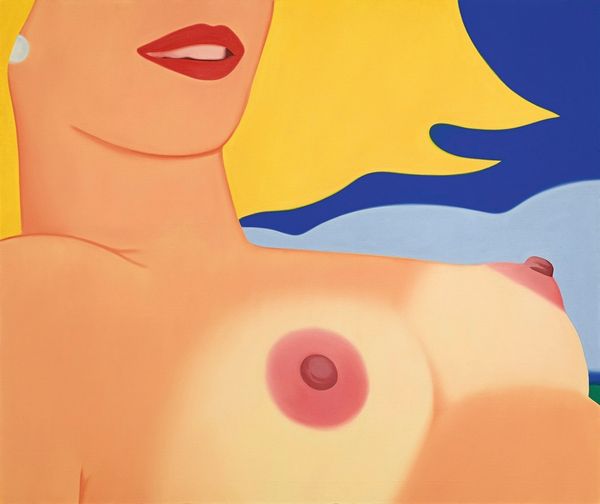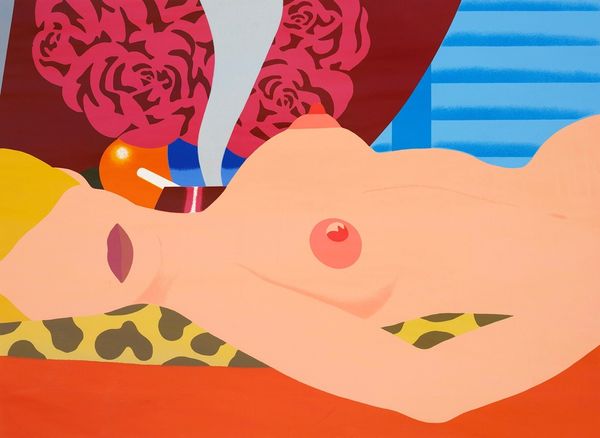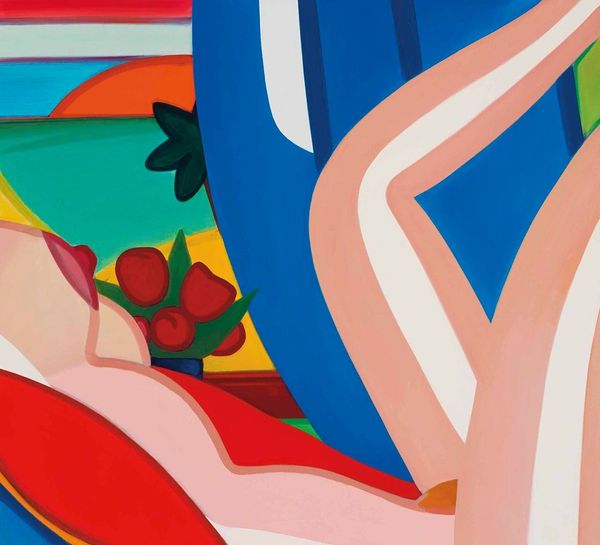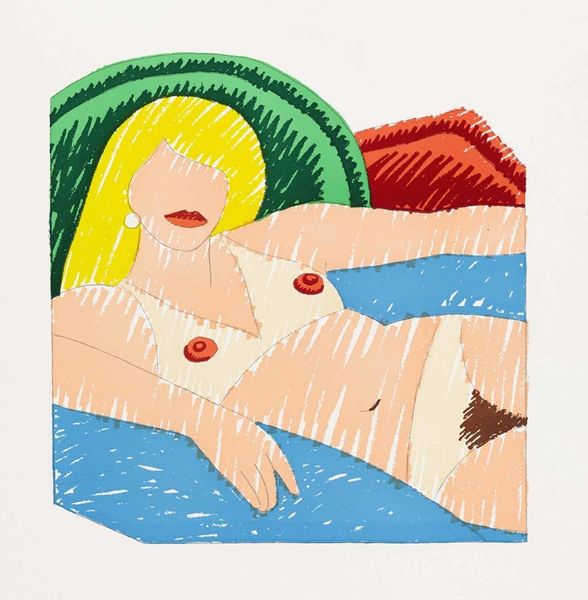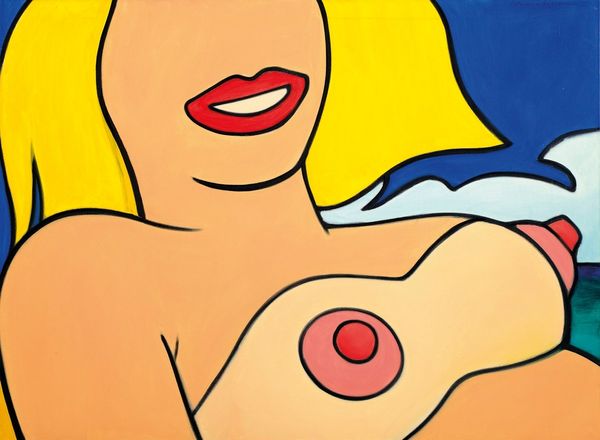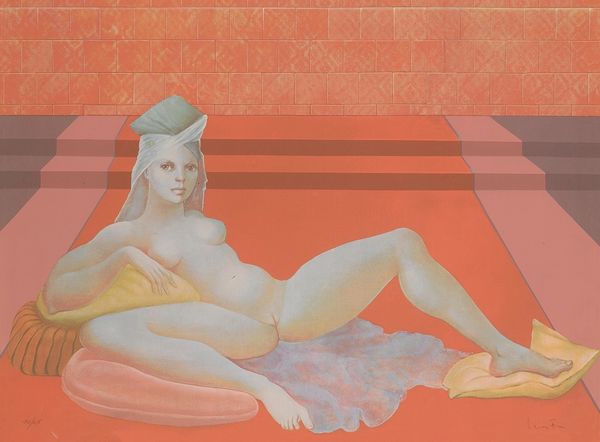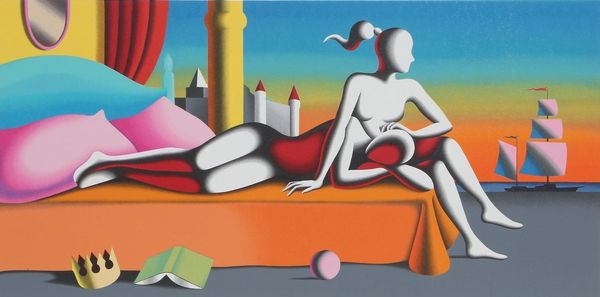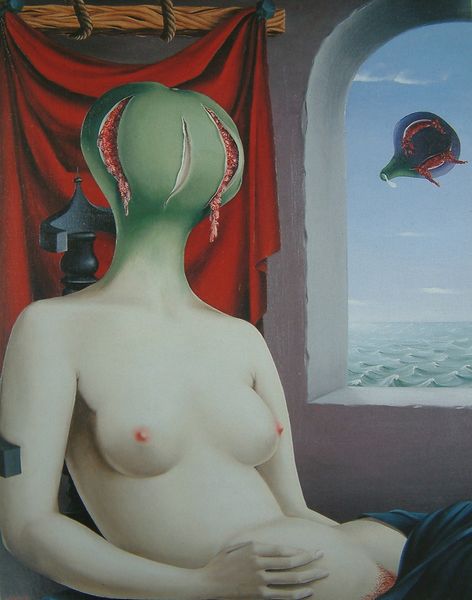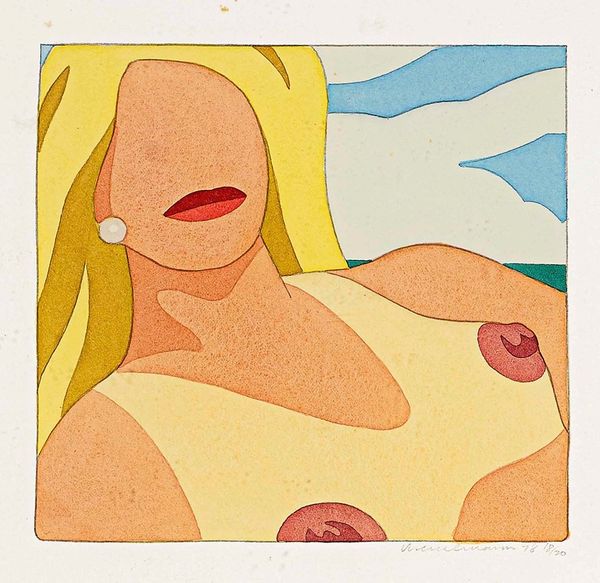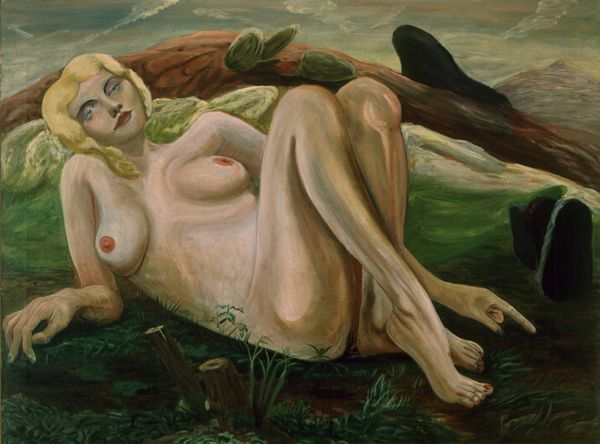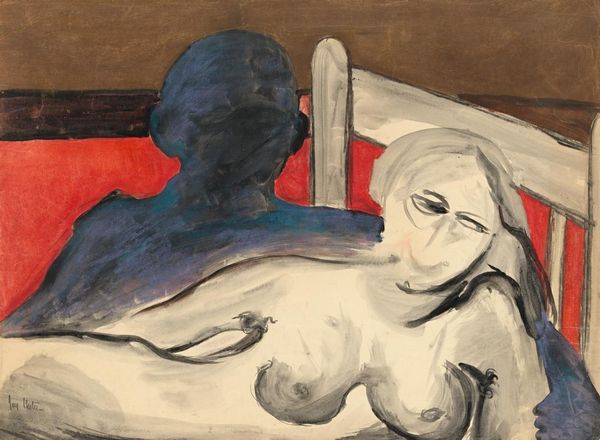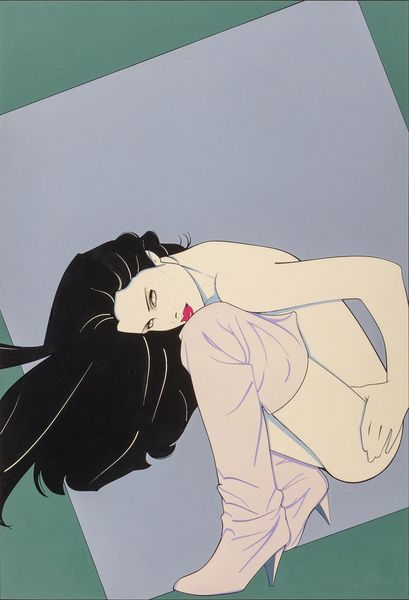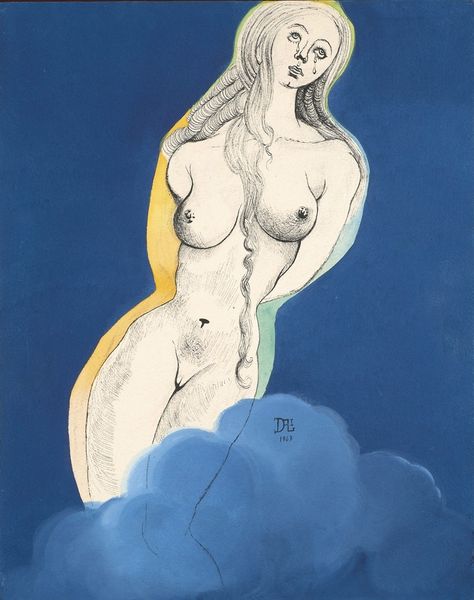
Copyright: Modern Artists: Artvee
Editor: Here we have Tom Wesselmann's "Study for Nude Aquatint," made in 1980 using acrylic paint. It strikes me how flattened the image is, almost like a collage, with blocks of bright colors forming the figure. What is your interpretation? Curator: It's astute to recognize that flattened effect. Wesselmann is, first and foremost, exploring the formal properties of painting. Observe how the hard edges delineate shapes; the curves of the figure are reduced to essential forms. Note the relationship between positive and negative space and how the flatness emphasizes the picture plane. Editor: So it's less about representing the nude and more about exploring shapes and colours? Curator: Precisely. Consider the relationship between the simplified forms and the bold, artificial palette. The use of acrylic further enhances this sense of flatness, lacking the texture and depth associated with traditional oil painting. Ask yourself, how does Wesselmann subvert expectations about portraiture? Editor: The lack of a face is jarring, yet it pushes me to notice the curves and colours even more. The pink of her skin and the bright blue of the couch become the focus. Curator: Indeed. By eliminating the face, Wesselmann transforms the figure into an object, drawing attention to its formal qualities. Does the work seem to lack emotional depth? Editor: I suppose so. It is emotionally cool, which makes me more attentive to how he deploys the forms. I learned to think less about the subject and more about how shapes are being organized on a plane. Curator: A keen insight! Examining how Wesselmann uses line, colour, and form reveals how an image can evoke and challenge artistic conventions.
Comments
No comments
Be the first to comment and join the conversation on the ultimate creative platform.
